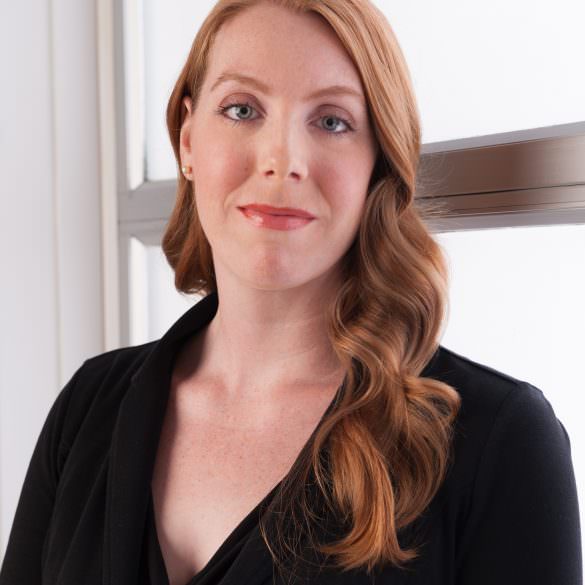How Inside Out Writer Meg LeFauve Created An Emotional Battle Inside The Mind
Inside Out comes with all the classic marks of a great Pixar movie. An all-ages storyline? Check. Beautiful animation paired with an unexpected, off-kilter premise? Check. Tears? Check and check.
The story takes place inside the mind of Riley, a pre-teen girl whose family moves from Minnesota to San Francisco, a transition that unleashes a flurry of upheaval among her five main emotions: Joy, Sadness, Fear, Anger and Disgust.
Before the move, Joy (voiced by Amy Poehler) ran the show, filling Riley’s mind with happy memories. After moving, Sadness, Fear, Anger and Disgust start running the control board, sending Riley spiraling further into unhappiness.
A mishap in the control center sends Joy out on a journey through Riley’s mind with Sadness. The two emotions, polar opposites, traipse through Riley’s library of memories, subconscious and dreams as they find a way to make Riley get through this emotional ordeal.
And what emerges in the journey are some poetically illustrated truths about ourselves and our minds sure to raise the emotional intelligence of both kids and adults who see the feature.
“I do think the movie speaks powerfully to adults,” said Meg LeFauve, a screenwriter on the project. But her two sons, nine and 11, recently saw the final cut and “totally got it,” she said.
“Our youngest son is a special needs kid, and we’re always wondering what’s going on in there,” LeFauve said. “The other day, he said, ‘I have joy and sadness and anger, and right now anger’s driving!’” It gave us a common language to discuss, that it’s okay to be angry and have all these emotions we have.”
LeFauve came into the story “in the middle,” she said: after director Pete Docter had fleshed out the details and picked out the five key emotions that would be part of the story, but before he had picked who would accompany Joy on her journey to fix Riley’s unhappiness from being uprooted.
“When I came on, Joy was teamed up with Fear, and it wasn’t working for Pete,” LeFauve said. “He realized he wanted to talk about sadness and how that connects people.”
On Joy and Sadness’ journey, Joy holds Riley’s core memories, which she needs to return to the control center. In the meantime, every memory Sadness touches turns from yellow to blue, and Riley’s “personality islands,” which show her love for hockey, goofiness, friends and family, crumble one by one.
Showing how the move affected Riley’s mind was a challenge for the writing team, LeFauve said. The group experimented with a number of ways to show the stakes of what was involved.
At one point, blackness started to overtake the mind. In another version, Joy and Sadness were journeying to find the core memories deep inside the mind.
But then a member of the Pixar Brain Trust suggested that an important item like the core memories should be carried – because if they weren’t being carried, how were they in jeopardy to begin with? And that, LeFauve said, became what viewers see in the final version.
Having access to the Pixar Brain Trust, the group of writers and directors working on all the Pixar projects, was huge reason why LeFauve wanted to work at Pixar. “The best storytellers in the world were looking at my work, in whatever form we were bringing it. It’s intimidating and challenging, but watching those story minds work was one of the best experiences I had at Pixar.”
Working at Pixar was the fulfillment of a lifelong dream for LeFauve, who started out as a producer for Jodie Foster before pursuing a dream to become a screenwriter. “I jumped off a cliff to leave one of the best jobs in Hollywood with one of the best people in Hollywood,” LeFauve said, paying her dues by writing scripts no one ever saw and working her way up.
Pixar was her mountaintop as a storyteller.
“I set Pixar as a beacon way out on the horizon when I started,” LeFauve said. “I thought they were amazing storytellers, but they very rarely have open writing assignments. It was something I always wanted.”
She spent a year and a half working on Inside Out, then another year and a half working on another Pixar movie (she can’t say any more). Post-Pixar, she’s been tasked with writing another script for Disney, Captain Marvel. It will be Marvel’s first production with a female as the lead, solo superhero.
She’s most proud of a moment toward the end, an emotional dialogue between Riley and her parents. “That was the most challenging part to write, but I was proud of that moment and what we were trying to say there,” LeFauve said.
Inside Out, seems to leave an open door for a sequel, via a “Puberty” button installed on the emotions’ console toward the end of the movie. Could there be a follow-up?
“No one’s told me yet,” LeFauve said. “That would be crazy.”
Featured image: Disney•Pixar’s “Inside Out” takes moviegoers inside the mind of 11-year-old Riley, introducing five emotions: Fear, Sadness, Joy, Disgust and Anger. In theaters June 19, 2015. ©2013 Disney•Pixar. All Rights Reserved.



